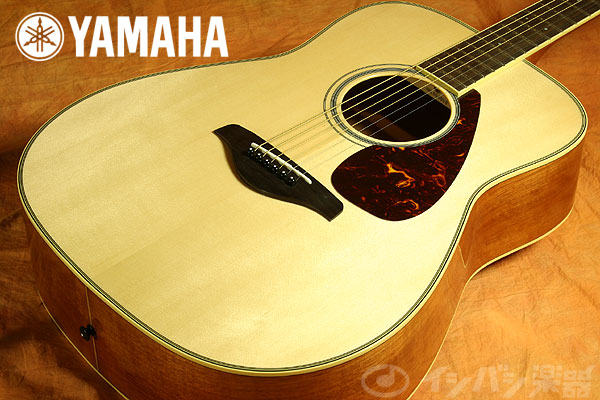 There are many different considerations that one has to keep in mind when looking to purchase a new guitar. Often the ultimate consideration is cost. Whether you are looking to add the 15th guitar to your collection or are buying your first because you have decided it is time to learn how to play, price is a factor that often overrides other important considerations like the guitar’s materials, tone, ease of play, or even simple looks. I know that when I first started to play guitar I had little to no money and as a result ended up owning what I could afford rather than what I really wanted and as a result I had some guitars that sounded less than ideal for what I wanted to play, that were frankly not the easiest to play, and that looked like hell. Had I not wanted to play so much, I can see how this would turn someone off of the instrument and effectively put an end to the endeavour. I suppose that technology has altered a lot of this because well-constructed guitars are coming from most major companies at incredibly reasonable price points and Yamaha is now different.
There are many different considerations that one has to keep in mind when looking to purchase a new guitar. Often the ultimate consideration is cost. Whether you are looking to add the 15th guitar to your collection or are buying your first because you have decided it is time to learn how to play, price is a factor that often overrides other important considerations like the guitar’s materials, tone, ease of play, or even simple looks. I know that when I first started to play guitar I had little to no money and as a result ended up owning what I could afford rather than what I really wanted and as a result I had some guitars that sounded less than ideal for what I wanted to play, that were frankly not the easiest to play, and that looked like hell. Had I not wanted to play so much, I can see how this would turn someone off of the instrument and effectively put an end to the endeavour. I suppose that technology has altered a lot of this because well-constructed guitars are coming from most major companies at incredibly reasonable price points and Yamaha is now different.
In this blog entry I will look at two different examples of guitars that are attractively priced so that they don’t eviscerate your wallet and still provide the sound and feel of a more expensive guitar which provides both new players and the old guard the chance to get a new (or another) acoustic axe that will meet their needs, wants, and leave some money for life’s other requirements. The two Yamahas under the microscope today are the FG 720S and the APX 500III. The FG 720S is a full size dreadnaught style acoustic guitar while the APX 500III is an electric acoustic guitar with a hollow body design. As a result of their differences, either one of these bad boys could fulfill that ache you have for an acoustic guitar and meet your requirements.
OVERVIEW(S)
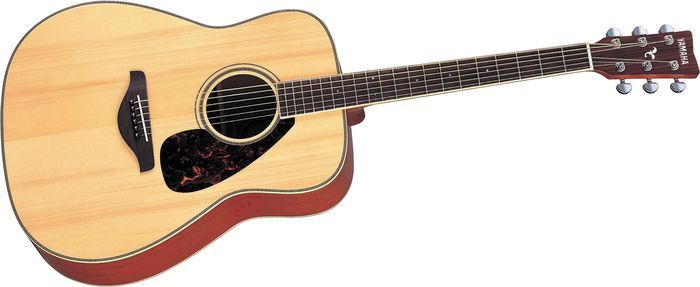
The Yamaha FG 720S features a solid Spruce top that is attached to a Mahogany body. It has a Rosewood fingerboard and bridge and the neck is Nato. Nato is an extremely strong wood that is similar to Mahogany but less expensive. In fact, it is often called “Eastern Mahogany” as it is so similar and by the inclusion of the mahogany title reflects that feeling of quality and cost that mahogany reflects. Nato is known for its warm sound and resonant qualities which is why it is used so frequently in lower priced guitars. The neck is bound and although that is primarily a cosmetic consideration, it does potentially protect the fretboard along the edges from impact damage. I realize that neck (and body) binding is a hugely personal choice and rationale vary but I personally prefer it as I feel that it adds a nice polished look of elegance to any guitar be it an acoustic or a solid body electric. The FG 720S also comes equipped with some nice quality die-cast tuning pegs and a tortoise pickguard. Fear not as it is not crafted from the actual shell of a tortoise (there are some examples of older guitars where this may actually be the case however) but refers more to the aesthetic look of the pickguard.
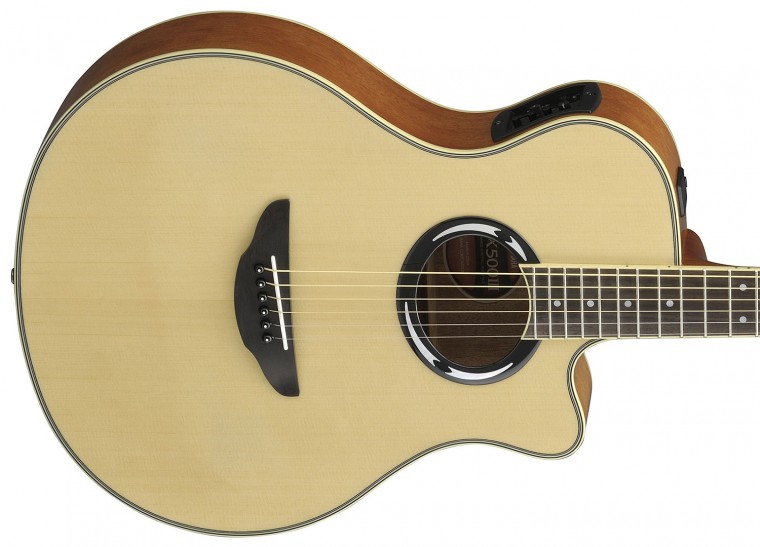 The Yamaha APX500III is a hollowbody electric acoustic that also features a spruce top but with a nato and okume (an African hardwood) body. It is a thin body design that sits significantly narrower than a regular dreadnaught acoustic and features Yamaha’s all new pickup system. The thin design also increases playability making it easier to play at all fret positions and this is magnified through the cutaway which opens the higher frets for easy access. Both the bridge and the fingerboard are crafted from rosewood and rather than a round soundhole, the APX500III features an oval opening which they claim increases the lower mids and adds some low end to the overall tone. The electrical components offer a built in tuner, a 3-band equalizer, and an adjustable mid-range frequency tone control. The neck and body are also bound which creates an incredibly slick overall look and an attractive profile that was incredibly comfortable to play.
The Yamaha APX500III is a hollowbody electric acoustic that also features a spruce top but with a nato and okume (an African hardwood) body. It is a thin body design that sits significantly narrower than a regular dreadnaught acoustic and features Yamaha’s all new pickup system. The thin design also increases playability making it easier to play at all fret positions and this is magnified through the cutaway which opens the higher frets for easy access. Both the bridge and the fingerboard are crafted from rosewood and rather than a round soundhole, the APX500III features an oval opening which they claim increases the lower mids and adds some low end to the overall tone. The electrical components offer a built in tuner, a 3-band equalizer, and an adjustable mid-range frequency tone control. The neck and body are also bound which creates an incredibly slick overall look and an attractive profile that was incredibly comfortable to play.
THE SKINNY
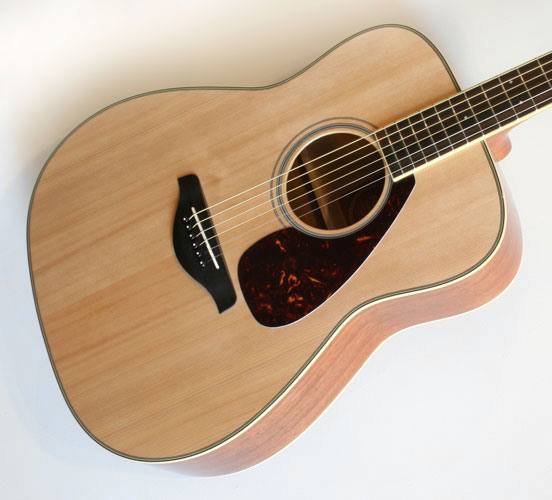 Both of these Yamahas were incredibly easy and smooth to play yet differed in the sound they ultimately produced. As a regular size dreadnaught acoustic, the FG720S sat comfortably on my lap and was weighted nicely so that I didn’t notice any particular issues that I often find in some full size acoustics. Issues like a heavy headstock that feels like it wants to dive down or a top heavy feel that keeps pulling the guitar away from your body were not apparent here. Right out of the box I had to tune it as it was several steps below regular tuning. I’m not sure if this is the case with all of the new Yamaha guitars as most that get sent to me are already setup and tuned, both both of these guitars required tuning as they were not even close. Having said that I have no idea who may have played this guitar before I got it (if anyone) so I can’t speak to the regular protocol for a new acoustic in unopened packaging. Were this to have been my own purchase, I would have changed the strings as well. Not to say that the factory strings were horrible by any stretch of the imagination but I do have strings that I use on all of my acoustics that I find most comfortable to play and give me the tone that I look for in an acoustic guitar. As with many things guitar related, these are simply personal choices but if you had none going into this, then the pre-installed strings are certainly adequate to get started. Tone wise the FG720S was solid with adequate bottom end and if anything, may have been a bit “fat” for my liking. This is something I am confident would have been rectified with a new set of strings. It was nice and loud when I needed it to be and was quite responsive to how it was played which I liked.
Both of these Yamahas were incredibly easy and smooth to play yet differed in the sound they ultimately produced. As a regular size dreadnaught acoustic, the FG720S sat comfortably on my lap and was weighted nicely so that I didn’t notice any particular issues that I often find in some full size acoustics. Issues like a heavy headstock that feels like it wants to dive down or a top heavy feel that keeps pulling the guitar away from your body were not apparent here. Right out of the box I had to tune it as it was several steps below regular tuning. I’m not sure if this is the case with all of the new Yamaha guitars as most that get sent to me are already setup and tuned, both both of these guitars required tuning as they were not even close. Having said that I have no idea who may have played this guitar before I got it (if anyone) so I can’t speak to the regular protocol for a new acoustic in unopened packaging. Were this to have been my own purchase, I would have changed the strings as well. Not to say that the factory strings were horrible by any stretch of the imagination but I do have strings that I use on all of my acoustics that I find most comfortable to play and give me the tone that I look for in an acoustic guitar. As with many things guitar related, these are simply personal choices but if you had none going into this, then the pre-installed strings are certainly adequate to get started. Tone wise the FG720S was solid with adequate bottom end and if anything, may have been a bit “fat” for my liking. This is something I am confident would have been rectified with a new set of strings. It was nice and loud when I needed it to be and was quite responsive to how it was played which I liked.
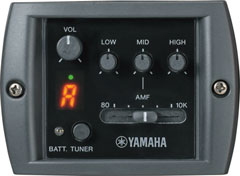 To say that I was blown away by the APX500III would almost be an understatement. For beginners, Yamaha should do away with the long and confusing APX500III moniker, for “Comfort” be thy name. Standing or sitting it just became a part of my body, never working against it or fighting to be anywhere other than where I wanted it to be. This guitar was incredible playing and sounding. Whether plugged into an amplifier or simply placed on my lap and played acoustically, it was so incredibly resonant I was initially taken aback. Chords and notes just rung out and held which created this lush texture behind whatever new note or chord I was now playing. It sounded so full and creamy that I didn’t want to stop playing. At the end of this blog is a video I shot playing both of the guitars and I hope you can get even a small feel for this, as it was impressive. It was so easy to play as access to the entire fretboard is possible and the slim body design never left me feeling like I was reaching or lurching in order to hit certain shapes or positions. Tone wise I would describe it as “delicately balanced”. That is to say that it was bright enough to cut through but not too bright to overpower the mids and low end. If anything, it may have been too bright but again, changing the strings would be the solution to this I’m certain. It had enough bottom end to add some beef to the tone without muddying it up. The end result was thus a nice balanced tone that can be tuned to exactly what you want with the onboard 3-band EQ.
To say that I was blown away by the APX500III would almost be an understatement. For beginners, Yamaha should do away with the long and confusing APX500III moniker, for “Comfort” be thy name. Standing or sitting it just became a part of my body, never working against it or fighting to be anywhere other than where I wanted it to be. This guitar was incredible playing and sounding. Whether plugged into an amplifier or simply placed on my lap and played acoustically, it was so incredibly resonant I was initially taken aback. Chords and notes just rung out and held which created this lush texture behind whatever new note or chord I was now playing. It sounded so full and creamy that I didn’t want to stop playing. At the end of this blog is a video I shot playing both of the guitars and I hope you can get even a small feel for this, as it was impressive. It was so easy to play as access to the entire fretboard is possible and the slim body design never left me feeling like I was reaching or lurching in order to hit certain shapes or positions. Tone wise I would describe it as “delicately balanced”. That is to say that it was bright enough to cut through but not too bright to overpower the mids and low end. If anything, it may have been too bright but again, changing the strings would be the solution to this I’m certain. It had enough bottom end to add some beef to the tone without muddying it up. The end result was thus a nice balanced tone that can be tuned to exactly what you want with the onboard 3-band EQ.
THE BOTTOM LINE
Both of these are very good guitars and I had to keep telling myself the low price point these were at because they played and sounded like guitars I have played at double that price or more. The FG720S is a very nice sounding dreadnaught style electric acoustic that would be great guitar for someone not wanting to break the bank but have a solid and reliable guitar to strum on the couch or around the campfire. The APX500III is a whole other beast. This guitar is likely one of the better looking and sounding electric acoustics I’ve ever picked up and at its price has to be considered one of the better values in the industry. I literally kept thinking, “This only costs how much?” Couch, camping, or onstage this guitar will look and sound like it is exactly where it belongs. All that is left for me to say at this point is get down to your local Best Buy and give these Yamahas a good strumming to see if they are the guitars that will fit whatever it is that you are searching for.



